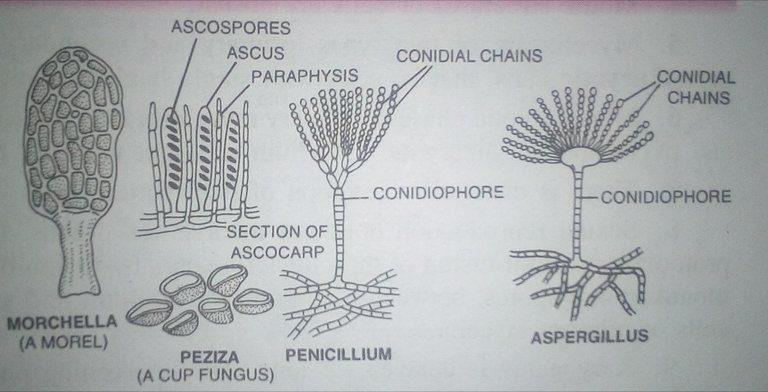Yeasts: Yeasts are a ultiply ase group of nonmycelial or pseudomycelial ascomycetes which are either by the form of budding or fission and where asci are not organized in ascocarps iS Depend on the mode of asexual reproduction, yeasts are of three types yeasts (eg Saccharomyces), fission yeasts (eg, Schizosaccharomyces) and halobial yeasts (both budding and fission, eg, Saccharomycoides). Yeasts in which is the true yeasts. Related forms which resemble yeasts in most character istics but where ascus formation is not reported, are called false yeasts, e.g., Candida, to gast i Mycoderma, Cryptococcus They are otherwise included in deuteromycetes. Economic Importance (i) Brewing Industry Under anaerobic conditions sugary so-lutions inoculated with yeasts are converted into alcoholic beverages, e.g., beer, wine, cider, toddy They are concentrated to produce rum and whisky. The two common yeasts used by brewing industry are Saccharomyces cerevisiae (Beer or Baker's yeast) and S ellipsoidens (Wine Yeast). (ii) Baking Industry. Kneaded flour is inoculated with Saccha-Baker's Yeast). It produces carbon dioxide and alcohol. The two evapo- rate during baking, making the dough soft and spongy (iii) Vitaminised Food Used as vitaminised food (iv) Curing Yeasts are used in curing cocoa beans. (v) Spoilage of Food Being saprotrophic, yeasts attack romyces cerevisiae
Various food stuffs including tomato products,foods having lactic acid and carbonate beverage.
Hi! I am a robot. I just upvoted you! I found similar content that readers might be interested in:
http://www.biologydiscussion.com/fungi/classification-fungi/classification-of-fungi-with-diagram/69720